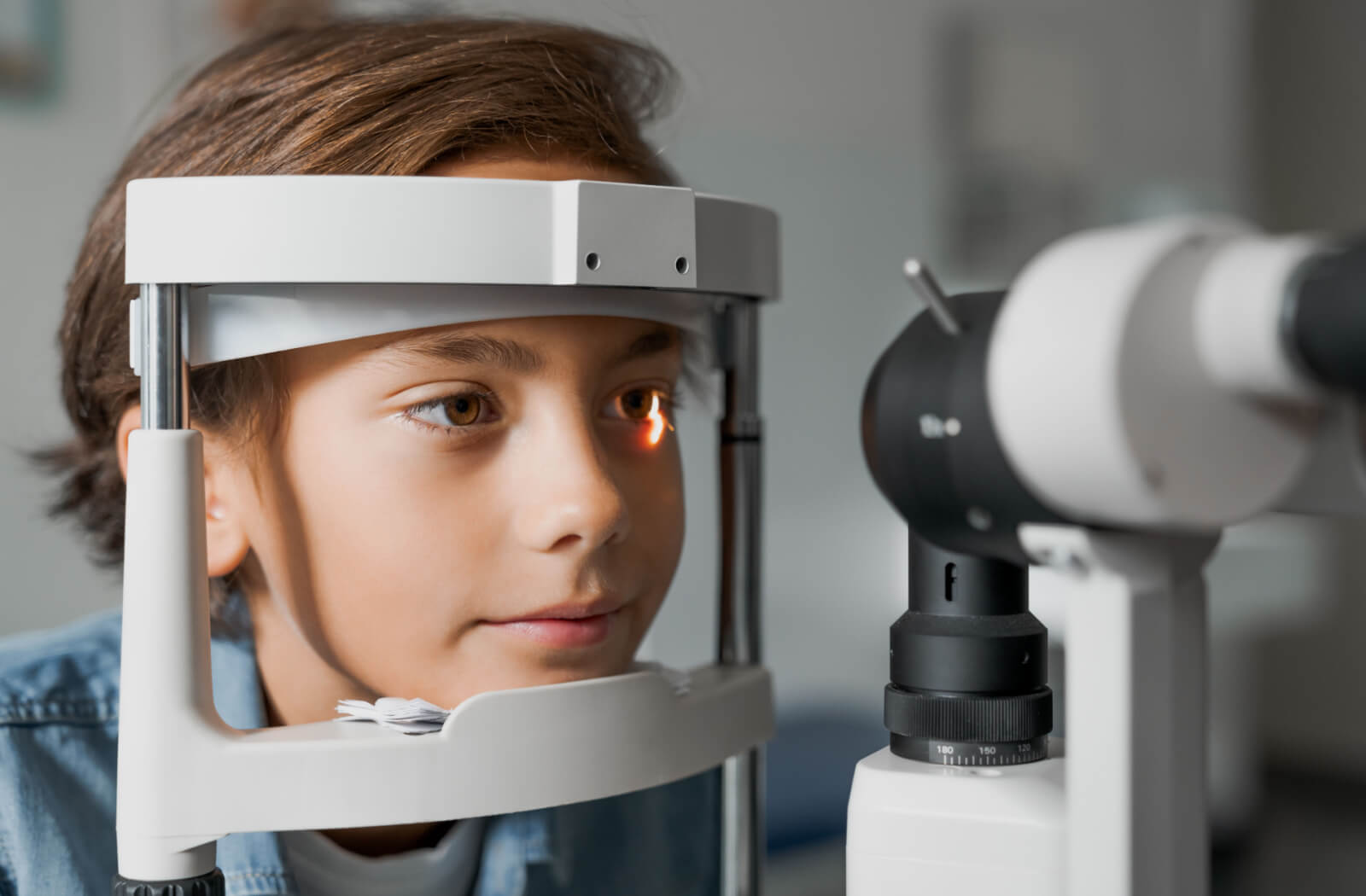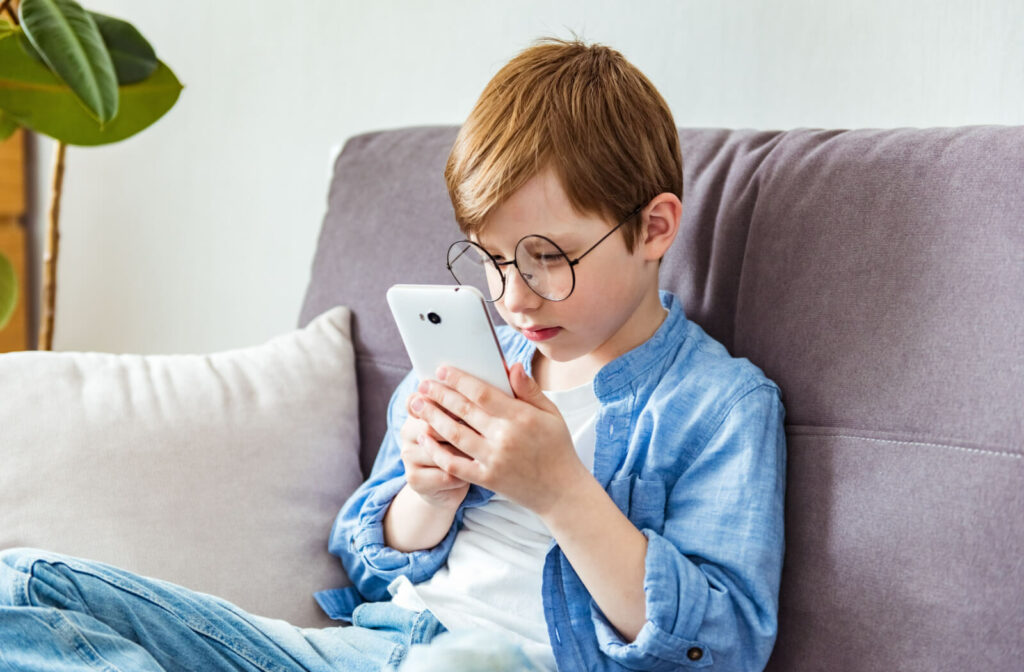Is your child nearsighted? Myopia, or nearsightedness, is a common refractive error that makes distant objects appear blurry while nearby objects remain clear. It begins in childhood and often worsens as children grow. Children are more often being diagnosed with myopia at younger ages.
Progressive myopia occurs when nearsightedness continues to get worse as your child grows rather than remain constant. It can be an incredibly challenging issue that needs careful monitoring and management by professionals.
We know your child’s eyesight and eye health are important to you. Myopia management can help protect their eyes for the future.
What Is Progressive Myopia?
Myopia occurs when the eye grows too long or the cornea is too steep, causing light entering the eye to land in front of the retina instead of on it. The retina is a thin layer of light-sensitive cells that collects light to send to the brain, interpreting it as images. When light lands in front of the retina, distant images appear blurry.
When myopia continues to worsen, it’s known as progressive myopia. Progressive myopia can develop into high myopia and lead to severe vision problems such as retinal detachment, glaucoma, and cataracts.
During childhood, the eye grows faster than in adolescence, when growth slows down. If a child develops myopia at an early age, around 6–8, their eyes have more time to grow rapidly and for their myopia to progress, increasing their risk of high myopia.
What Causes Progressive Myopia?
Myopia is a complex condition, but studies show it may be caused by a combination of factors.
Genetics plays an important role, as those with a family history of myopia are more likely to develop it themselves. Additionally, environmental aspects may contribute. Spending a lot of time doing close work, such as reading or using a computer, and not enough time outdoors during childhood can signal the eyes to keep growing.
How to Detect & Diagnose Progressive Myopia in Children
As parents, we always want the best for our children. Detecting and diagnosing progressive myopia can be challenging, but it’s crucial to catch it early to prevent long-term issues with their eye health and vision.
Children don’t always know how to express issues with their eyesight or may not even realize they see differently than others. You can help by watching for signs of myopia:
- Squinting often
- Complaining of headaches
- Holding books, toys, or other objects too close to their face
- Sitting too close to the TV
- Having trouble seeing the board at school
Don’t hesitate to schedule an eye exam with your child’s optometrist if you suspect they may develop progressive myopia. A comprehensive dilated eye exam is recommended for children aged 7–10 years to detect and diagnose progressive myopia.
Depending on the severity of the case, an ophthalmologist, optometrist, or family doctor may suggest corrective lenses or specific treatments to stop the condition’s progression. By being proactive and catching it early, you can help your child’s eyes stay healthy and protect their vision for years.
How to Stop Progressive Myopia
Traditionally, myopia is corrected with glasses or contact lenses. Once eyesight has stabilized (usually around age 21), myopia can be corrected with laser eye surgery. But it’s important to know that myopia isn’t curable. These methods only correct it—they don’t stop it.
Because of the vision risks posed by myopia, managing myopia progression while the eyes are still developing is crucial. Fortunately, myopia management options exist to help slow progressive myopia, including specialized contact lenses, such as specialty contact lenses, eyeglass lenses, or atropine eye drops.
Natural Strategies for Slowing Myopia Progression
One of the simplest things you can do is to encourage your child to spend more time outdoors, ideally in bright light. Studies show that exposure to natural light can help prevent myopia from worsening.
Another helpful measure is to limit your child’s screen time, including computer, tablet, and smartphone use. Experts recommend minimizing screen time can support healthy overall development, especially in children under 5.
With these simple steps, you can help protect your child’s eyes and prevent myopia progression.

The Next Steps
With early detection and management strategies, there is potential for slowing down the rate of myopia progression and reducing the associated complications.
If you suspect your child might have progressive myopia, you should consult your optometrist as soon as possible. They’re one of the best resources for determining the best strategy for protecting your child’s eyes.
Contact our team at One Vision Eyecare in Gwillimbury for appointments and information on how to care for your child’s eye health.



